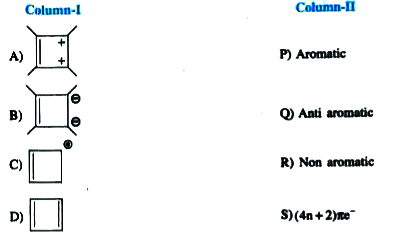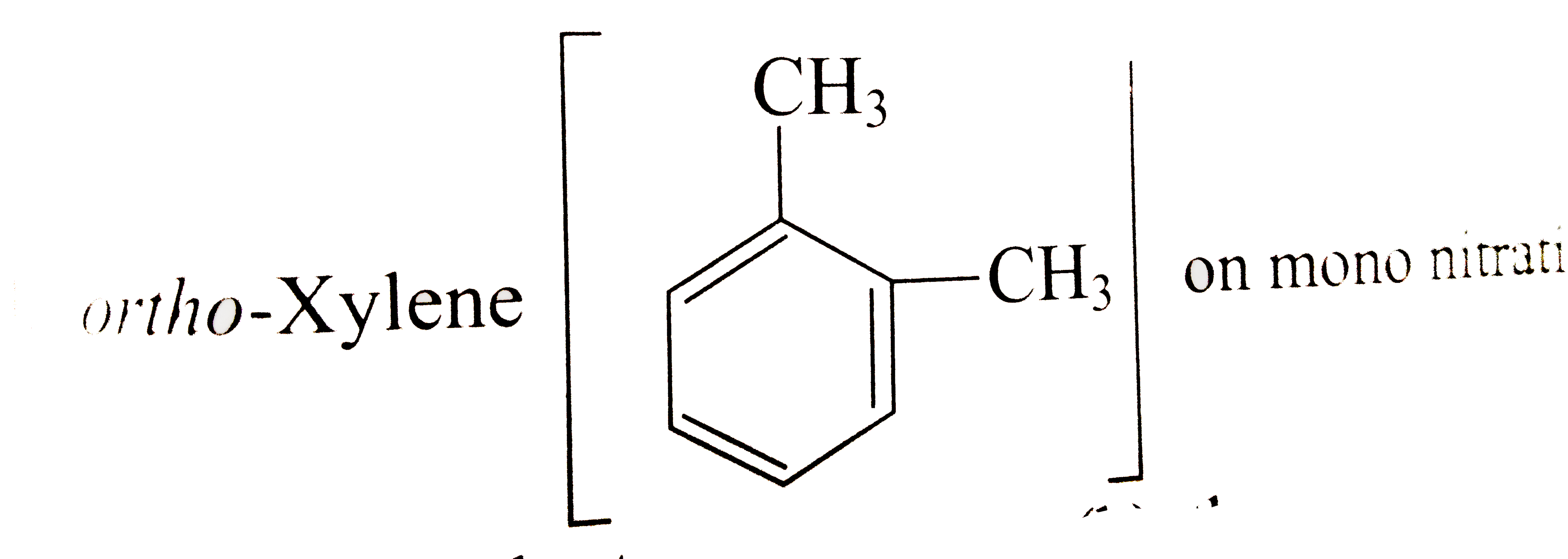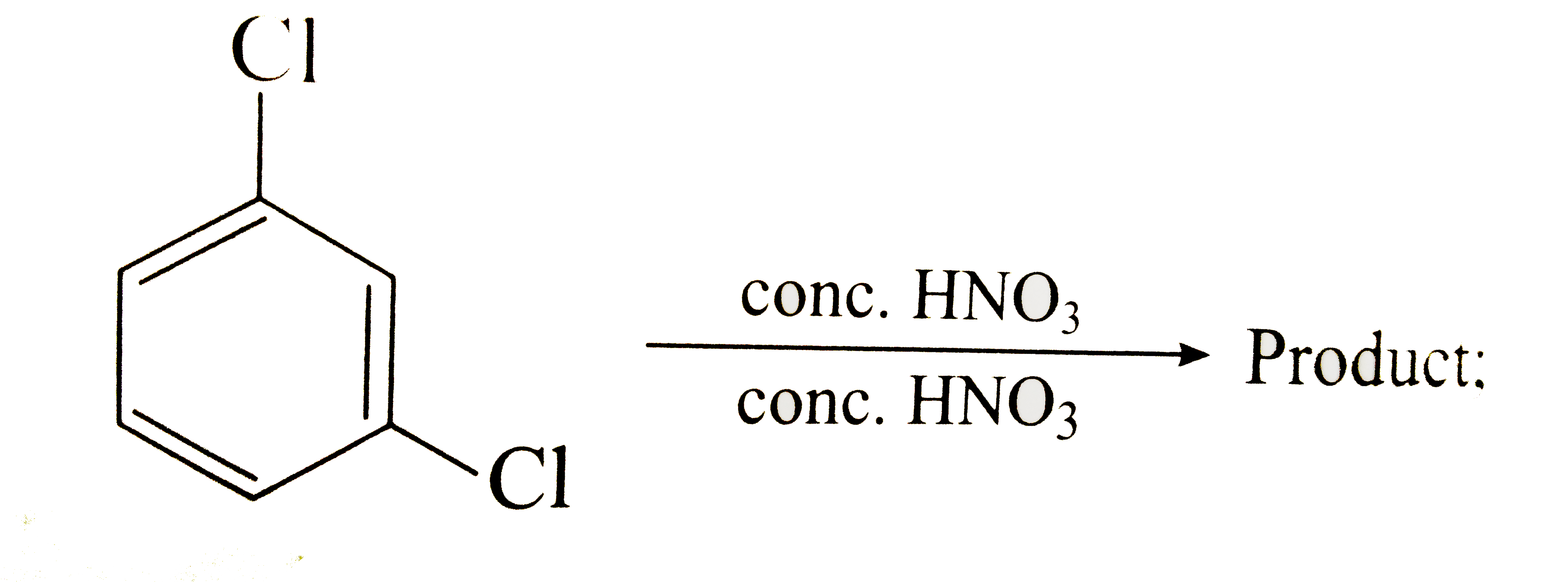Electrophilic substitution on mono substituted benzene is determined by electronic effects +1, -M groups are ortho, para directors, where as -1,-M groups are meta directions. When there is a competition between inductive and mesomeric effects, the latter wins over. Electrophilic substitution on disubstituted benzene is determined by the combined effect of both groups. Usually activating group wins over deactivating group. When one of the groups has a lone pair of electrons, that will determine the product formation. Usually a third group will not enter the position in between the two existing groups due to steric reasons.
Identify the incorrect statement Solution in Telugu
Solvolysis of cholorobenzene is difficult but 2,4,6-trinitrochlorobenzene can be easily solvolysed
Reactivity of chlorobenzene is more than benzene
p/o-ratio increases when host group is bulky
Toluene is more reactive than benzene
The correct Answer is:B
Reactivity of chlorobenzene is less than benzene
Topper's Solved these Questions
- BOOK - AAKASH SERIESCHAPTER - HYDROCARBONSEXERCISE - LECTURE SHEET ( EXERCISE-V (AROMATICITY AND ACID-BASE PROPERTIES , AROMATIC ELECTROPHILLIC SUBSTITUTION(INTEGER TYPE QUESTIONS)))4videos
HYDROCARBONS
- BOOK - AAKASH SERIESCHAPTER - HYDROCARBONSEXERCISE - LECTURE SHEET ( EXERCISE-V (AROMATICITY AND ACID-BASE PROPERTIES , AROMATIC ELECTROPHILLIC SUBSTITUTION (MATRIX MATCHING TYPE QUESTIONS)))1videos
HYDROCARBONS
- BOOK - AAKASH SERIESCHAPTER - HYDROCARBONSEXERCISE - LECTURE SHEET ( EXERCISE-V (AROMATICITY AND ACID-BASE PROPERTIES , AROMATIC ELECTROPHILLIC SUBSTITUTION(MORE THAN ONE CORRECT ANSWER TYPE QUESTIONS )))12videos
HYDROCARBONS
- BOOK - AAKASH SERIESCHAPTER - GENERAL ORGANIC CHEMISTRYEXERCISE - QUESTIONS FOR DESCRIPTIVE ANSWERS35videos
GENERAL ORGANIC CHEMISTRY
- BOOK - AAKASH SERIESCHAPTER - HYDROGEN AND ITS COMPOUNDSEXERCISE - QUESTIONS FOR DESCRIPTIVE ANSWERS20videos
HYDROGEN AND ITS COMPOUNDS
Similar Questions
How many of the following reagents can give benzene from benzene diazonium salt?
H2O,CH3CH2OH,H3PO4,H3PO2,HCHO,CH3COOH,RCHO03:49View Solution 06:12View Solution
06:12View Solution
. Here , A refers to01:57View SolutionMention the hybridisation stste of each carbon in the following compounds.
CH3−CH=C=O,CH3−C≡C−CH3,CH3COCH3andCH2=CHCN02:03View SolutionWhy the use of hard water is disadvantages?
01:32View SolutionA group which deactivates the benzene ring towards electrophilic substitution but directs the incoming group towards o- and p- position is
02:39View SolutionMeta-directing and deactivating group in the aromatic electrophilic substitution is :
02:30View SolutionIn the electrophilic substituion of benzene ring, the second substituent is directed by the group already present. Electron releasing groups (+I and +M) are ortho-para-directing and activating, whreas the electron withdrawing groups (-I and -M) are meta-directing and deactivating.
Halogens are placed under the category of +T (Tautomeric) groups because they have -Ibdyctuve abd +Mesomeric effect. These groups are deactivating but ortho-para-directing.
In the introduction of third group to the benzene ring, the product of minimum steric gindrance is formed.
Answer the follwing questions :
Ortho-Xylene on mono nitration gives 06:12View Solution
on mono nitration gives 06:12View SolutionIn the electrophilic substituion of benzene ring, the second substituent is directed by the group already present. Electron releasing groups (+I and +M) are ortho-para-directing and activating, whreas the electron withdrawing groups (-I and -M) are meta-directing and deactivating.
Halogens are placed under the category of +T (Tautomeric) groups because they have -Ibdyctuve abd +Mesomeric effect. These groups are deactivating but ortho-para-directing.
In the introduction of third group to the benzene ring, the product of minimum steric gindrance is formed.
In the reaction

Which of the following products is not formed at all ?View SolutionIn the electrophilic substituion of benzene ring, the second substituent is directed by the group already present. Electron releasing groups (+I and +M) are ortho-para-directing and activating, whreas the electron withdrawing groups (-I and -M) are meta-directing and deactivating. Halogens are placed under the category of +T (Tautomeric) groups because they have -Ibdyctuve abd +Mesomeric effect. These groups are deactivating but ortho-para-directing. In the introduction of third group to the benzene ring, the product of minimum steric gindrance is formed. Which of the following is not an ortho, para-directing group ?
04:03View SolutionIn the electrophilic substituion of benzene ring, the second substituent is directed by the group already present. Electron releasing groups (+I and +M) are ortho-para-directing and activating, whreas the electron withdrawing groups (-I and -M) are meta-directing and deactivating. Halogens are placed under the category of +T (Tautomeric) groups because they have -Ibdyctuve abd +Mesomeric effect. These groups are deactivating but ortho-para-directing. In the introduction of third group to the benzene ring, the product of minimum steric gindrance is formed. Which of the following substituted benzene derivatives would furmish three isomers when one more substituent is introduced ?
03:42View SolutionIn the electrophilic substituion of benzene ring, the second substituent is directed by the group already present. Electron releasing groups (+I and +M) are ortho-para-directing and activating, whreas the electron withdrawing groups (-I and -M) are meta-directing and deactivating.
Halogens are placed under the category of +T (Tautomeric) groups because they have -Ibdyctuve abd +Mesomeric effect. These groups are deactivating but ortho-para-directing.
In the introduction of third group to the benzene ring, the product of minimum steric gindrance is formed.
A deactivating group in electrophilic substitution reaction :01:22View SolutionMeta-directing and deactivating group in aromatic electrophilic substitution is
02:06View SolutionA group which deactivates the benzene ring towards electrophilic substitution but which directs the incoming group principally to the o- and p-positions is
01:37View SolutionMeta-directing and deactivating group in aromatic electrophilic substitution is :
01:24View Solution

